Retro Replay Review
Gameplay
Ultima V builds on the proven overhead map and turn-based combat engine of its predecessor, Ultima IV, offering both accessibility for series veterans and a gentler learning curve for newcomers. You guide the Avatar and a four-member party—downsized from earlier titles—through Britannia’s countryside, dungeons, and towns, engaging foes on a dedicated battle screen where positioning and tactical spellcasting matter. Classic elements like reagent-based magic, moongate teleportation, and varied transport options (ships, horses, and even a magic carpet) return, ensuring that exploration never grows stale.
(HEY YOU!! We hope you enjoy! We try not to run ads. So basically, this is a very expensive hobby running this site. Please consider joining us for updates, forums, and more. Network w/ us to make some cash or friends while retro gaming, and you can win some free retro games for posting. Okay, carry on 👍)
The game introduces fresh layers of interactivity: pushable blocks and levers in dungeons, chairs you can sit on in castles, and runic inscriptions that must be painstakingly deciphered. These details elevate environmental puzzles beyond routine fetch quests. Additionally, Britannia’s day/night cycle and rigid NPC schedules inject strategic planning into your travels—shops shutter at sunset, while guards patrol at dawn, forcing you to adapt your playstyle to the rhythm of the world.
Another standout feature is the infiltration of Shadowlord agents into towns. Their random appearances induce panic in townsfolk, cause thefts, or provoke open attacks on the Avatar, demanding constant vigilance. The Underworld caverns add further depth, brimming with traps, hostile creatures, and moral quandaries that test both your sword arm and your mastery of the Eight Virtues. Together, these mechanics keep the gameplay fresh and challenging from start to finish.
Graphics
For a title released in 1988, Ultima V’s graphics are remarkably detailed and atmospheric. The overhead world map is richly tiled, with distinctive landmarks—forests, mountains, and waterways—rendered in bold, contrasting colors that guide your exploration. Towns feature bespoke buildings: alchemist shops sparkle with bubbling vats, taverns display hanging lanterns, and temples radiate an air of solemnity that feels earned rather than generic.
The switch to the rosette-compass 3D style in dungeons deepens immersion, with stone walls and torches creating a claustrophobic, echoing ambiance. Gold coins gleam on the floor, hidden doors lurk behind tapestries, and each level feels handcrafted. While sprite animations are modest by modern standards, the careful use of shadows and simple lighting effects imbue every corridor with palpable tension.
Character portraits and icons are cleanly drawn, allowing you to instantly recognize your party members and foes. Even minor details—such as the Avatar’s changing attire when riding the magic carpet—add delightful visual flair. When combined with smooth scrolling and prompt screen transitions, the game’s presentation stands as a testament to the Ultima team’s knack for maximizing hardware potential.
Story
Ultima V’s narrative hinges on the corrupted reign of Lord Blackthorn, who has supplanted the benevolent Lord British and warped Britannia into a draconian police state. By perverting the Eight Virtues into rigid commandments punishable by death, Blackthorn’s regime strips morality of nuance, creating a society where true compassion or valor can be seen as crimes. This premise drives home the game’s moral core: virtues must guide, not govern, the human spirit.
As the Avatar, you embark on a quest to unravel the origins and agendas of the three insidious Shadowlords, each embodying the antithesis of Truth, Love, and Courage. Their presence in cities triggers chaos, turning once-friendly villagers into thieves or attackers. The stakes grow higher as you decode runic inscriptions to reveal hidden lore, assemble vital reagents, and seek clandestine allies within noble courts and outlaw hideouts alike.
Ultimately, rescuing Lord British from captivity and restoring the authentic meanings of the Virtues forms a satisfying narrative arc that transcends simple “defeat the bad guy” tropes. Dialogue choices—richer and more varied than previous Ultimas—invite you to negotiate, intimidate, or persuade, making the story feel like a living tapestry woven from your decisions. The game’s conclusion rewards both strategic thinking and moral reflection, leaving a lasting emotional impact.
Overall Experience
Playing Ultima V: Warriors of Destiny is akin to delving into a meticulously crafted fantasy novel where you are both protagonist and co-author. Its blend of strategic combat, environmental puzzles, and moral dilemmas keeps you engaged for dozens of hours. The game’s pacing is deliberate, encouraging exploration and experimentation rather than rushing you toward an endgame.
While some modern players may find the interface dated, the depth of interaction with Britannia’s citizens and environment more than compensates for clunkier controls. The day/night cycle and NPC routines imbue the world with authenticity, making every town feel inhabited and every dungeon viable as a dynamic challenge rather than a static backdrop.
In an era when many RPGs leaned heavily on loot collection and monster-slaying, Ultima V stands out for weaving ethical philosophy into its very design. It challenges you not just to triumph in battle, but to reflect on the nature of virtue—making it as relevant today as it was at release. For fans of rich storytelling, complex gameplay, and atmospheric worldbuilding, this classic remains an indispensable journey through the heart of Britannia.
 Retro Replay Retro Replay gaming reviews, news, emulation, geek stuff and more!
Retro Replay Retro Replay gaming reviews, news, emulation, geek stuff and more!
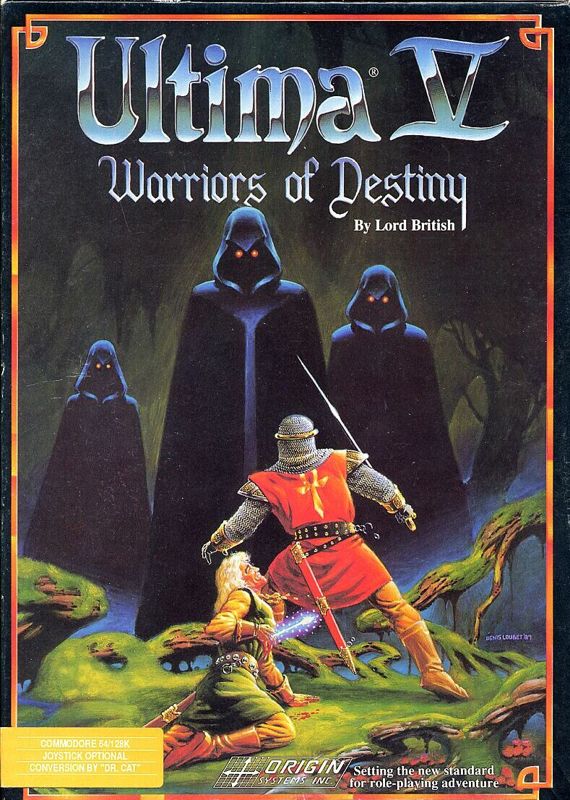
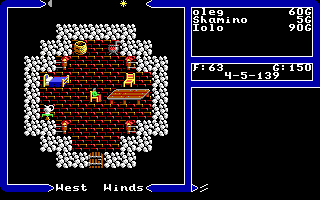
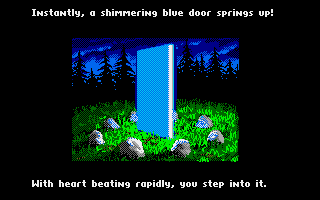
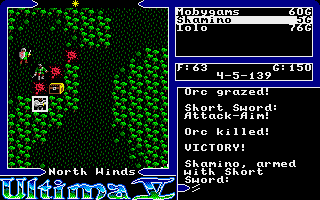



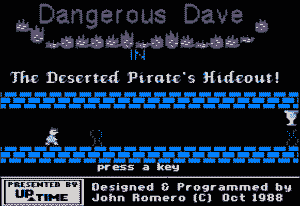

Reviews
There are no reviews yet.